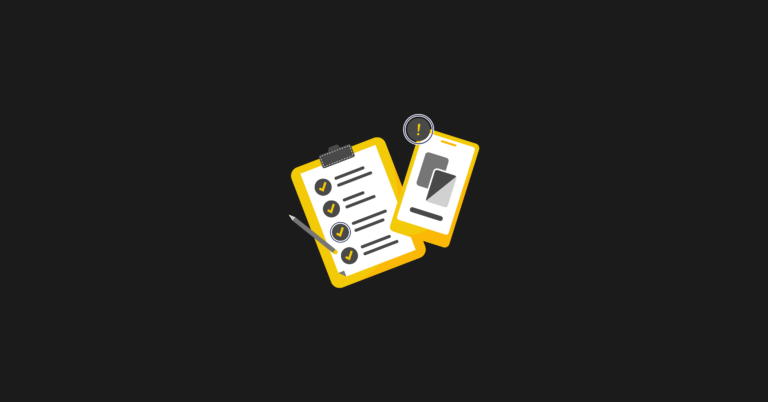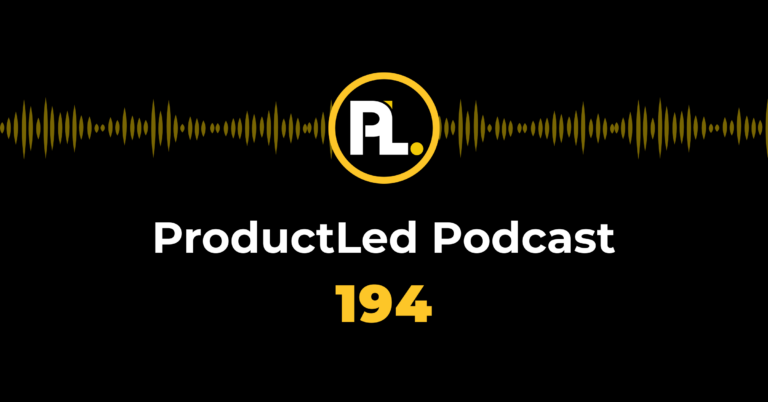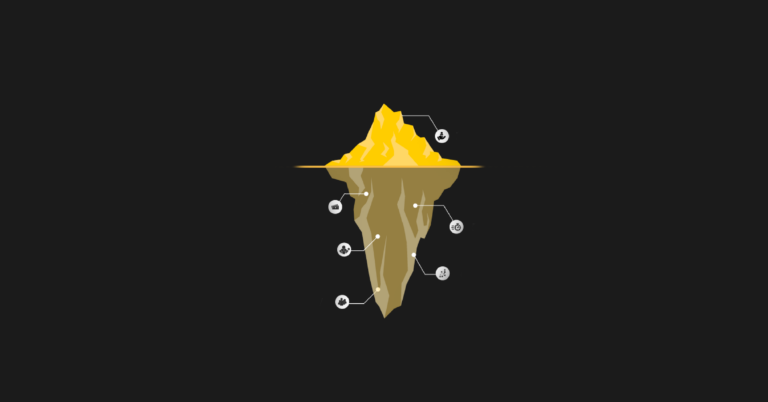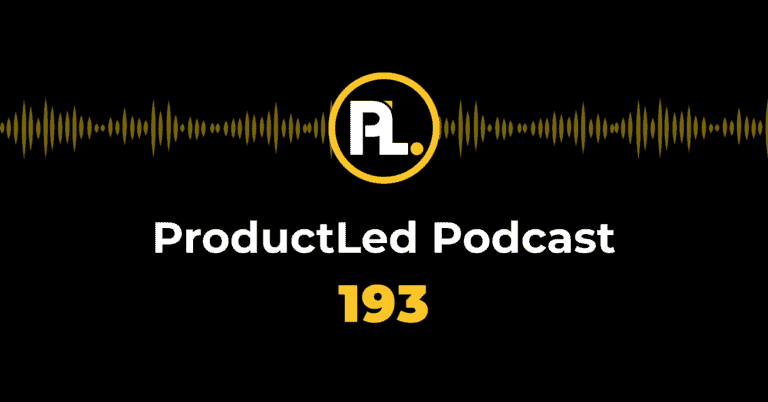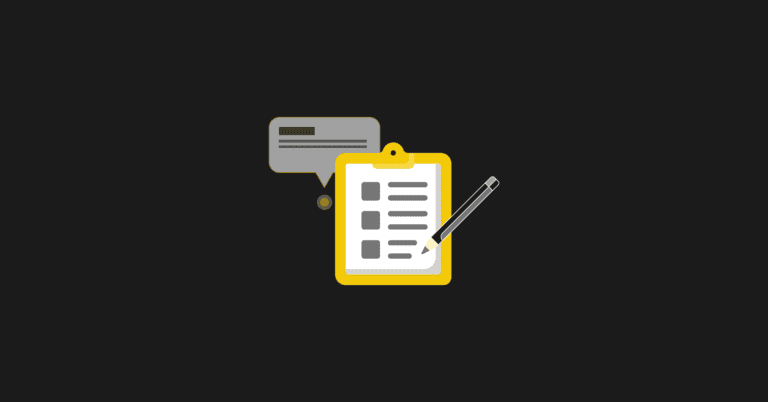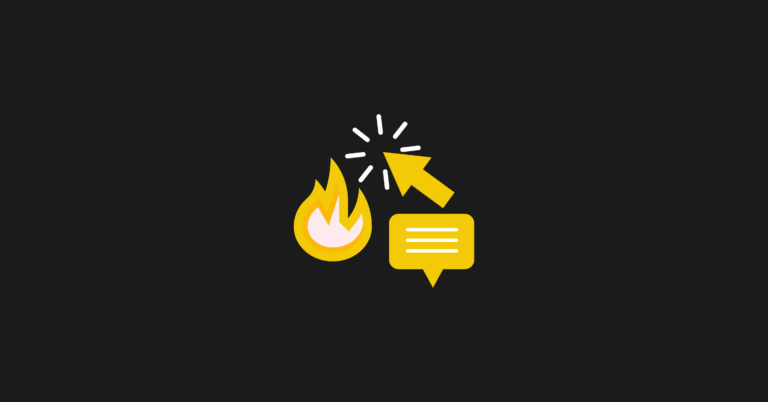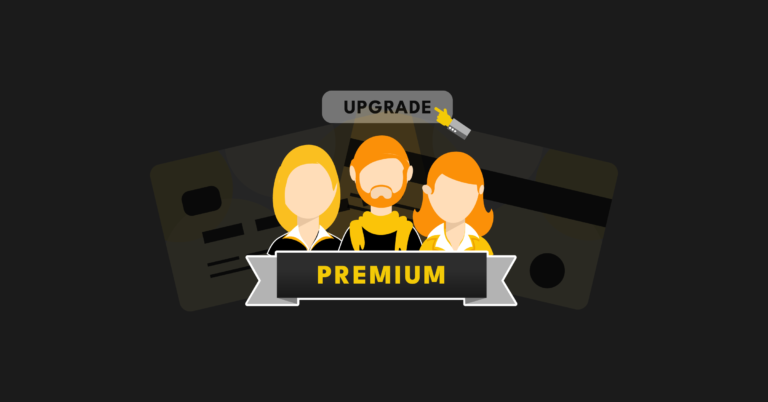Many B2B SaaS companies think product-led growth (PLG) just means adding a free trial to their product. Once the free trial is up and running, they expect to see paying customers skyrocket.
But when they take this approach, their PLG initiative almost always fails, because just adding a free trial is not product-led growth.
A successful transition to product-led growth requires a complete reorganization of priorities within every team in the business — a process that doesn’t magically happen when you add on a free trial.
I learned this the hard way when I was a growth marketer at Vidyard. Wanting to boost leads and scale the product as fast as possible, we added a free trial option, but didn’t change anything else.
It bombed.
Now, after writing my best-selling book Product Led Growth and training more than 500 product leaders on this new go-to-market strategy, I know exactly what we did wrong.
It’s the same mistake so many companies make when they first try to transition to product-led growth.
In this article, I’ll share how I discovered what we were doing wrong at Vidyard and how I learned the number one reason most product-led transitions fail. I’ll also share four other common mistakes that can slow down or doom any PLG initiative, and show how my product-led growth training program helps teams avoid those mistakes.
Vidyard: A Tale of Two Product-Led Models
Vidyard is a video messaging tool that lets you track the performance of your videos and see exactly who watched them. Back in 2016, we had just landed major VC investments and were trying to scale up as fast as we could. To that end, we experimented with several different customer acquisition models, which I now realize were our first forays into product-led growth (but no one was calling it that at the time).
The Free Trial That Failed
To let customers try the product before buying, we launched a 30-day free trial. As I mentioned before, it was a nonstarter from the minute it launched.
Looking back now, it’s easy to see the mistakes we made.
The free trial gave users full access to the product, but since the main use case was seeing the performance of videos that were embedded on your marketing site, very few users were reaching that point during the trial period. A user would have to create and upload a video, embed it onto their website, and then integrate it with their marketing automation platform to actually see the performance insights Vidyard provided.
We didn’t realize it at the time because we had very limited analytics, but that was a big ask!
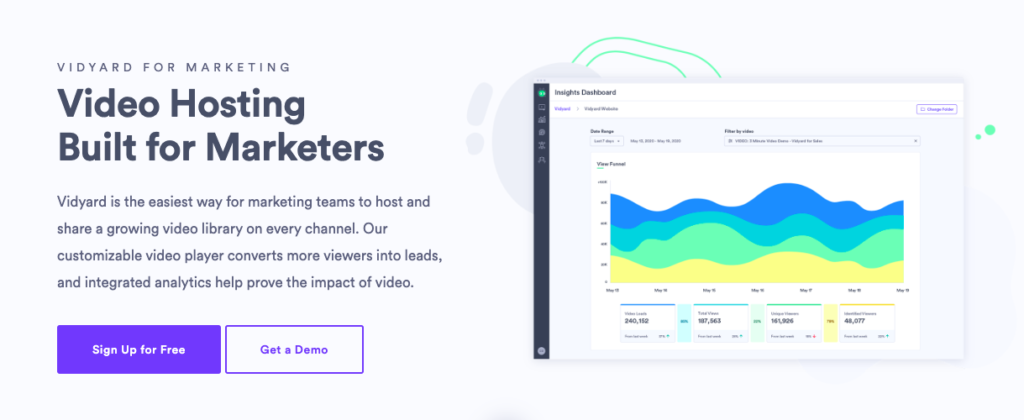
On top of that, the free trial dramatically decreased our demo requests, so our Sales team started using the free trial user group as a source of qualified leads. While that may sound like a good thing, in our case, since we didn’t have any analytics, we were treating every free trial sign-up as a new lead. That meant our Sales team was wasting a lot of time calling users who had never opened the product or had opened it once but never came back.
Given what we know now, it’s not surprising that the Sales team had little success converting free trial users to paying customers.
The Freemium Product That Took Off
Fortunately, Vidyard didn’t give up on product-led growth after the experience with the free trial. We tried again with a different approach — a freemium product that solved a different pain point: easily creating and sending personalized videos to prospects.
The free product is a chrome extension that allows you to record a quick video or screen recording, copy the link, then send it to people. Then, if they watch it, you see how far they make it.

This made it extremely easy for users to understand the use case for Vidyard’s premium product. If you made just one video and sent it to someone, you’d see the video analytics and then start thinking about how helpful it could be to know who had watched the rest of your marketing videos, like the ones embedded on your marketing site.
The freemium product took off. More than 100,000 users downloaded it in the first year alone and now it’s been used by millions.
The Top Reason Most Product-Led Transitions Fail
While we made many key mistakes with our first attempt at product-led growth, the biggest reason it failed was this:
We weren’t successfully engaging users before trying to monetize them.
And even today, after working with hundreds of companies looking to implement PLG, this is still the biggest mistake I see companies make when they try to switch to become product-led.
The engagement step is crucial: it’s when users feel the magic of using your product. It’s the “Aha!” moment where they realize how much time your product can save them or what problems they can solve with your product.
When we implemented that free trial at Vidyard, we had what appeared to be a product-led go-to-market strategy, but we were still following the typical sales-led growth model of doing business: acquire, then monetize, then engage/activate, then expand.
But in PLG, you have to engage before you monetize.
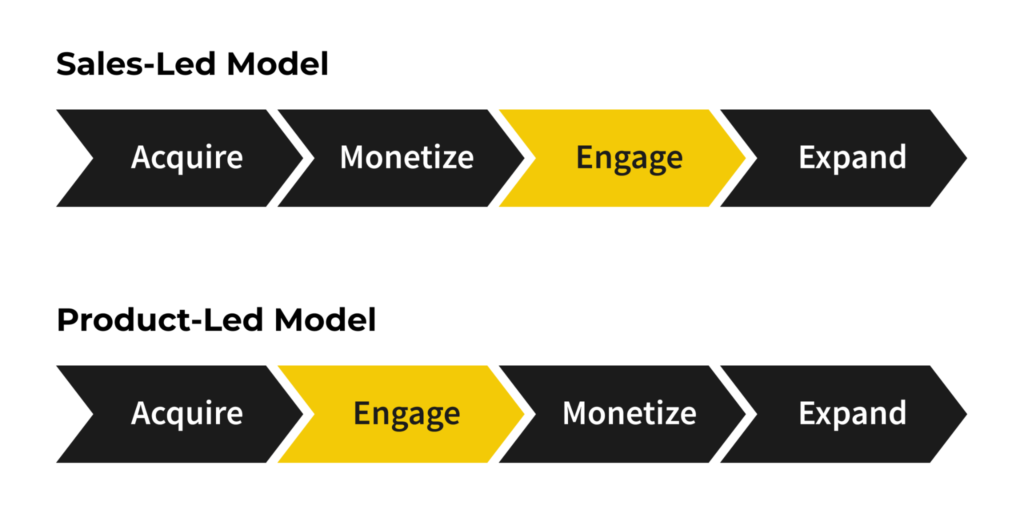
There are typically two reasons why companies trying product-led growth fail to engage users before monetizing them:
- They don’t know what the "Aha!" moment is for their users.
- It’s too hard (or even impossible) for a free trial user to experience the "Aha!" moment during the free trial or in the free version of the product.
For Vidyard, it was the second reason that doomed the free trial. A user had to complete too many time-consuming steps before they could experience the "Aha!" moment, and very few of them stuck around that long.
If you’re not making sure users accomplish an early win with your product, then your free trial or free product is just another lead generation tool for your Sales team (and likely not even a good one).
4 More Mistakes Teams Make When Trying Product-Led Growth
My experiences at Vidyard taught me that while PLG can be transformative when done well, figuring out how to effectively let users “try before they buy” can be a minefield. After coaching more than 300 companies who were preparing to switch or in the thick of making the switch to product-led, I’ve identified four more common mistakes that can sink a product-led transition.
Mistake 1: Choosing the Wrong Product-Led Model
Although I’ve mostly referred to free trial and freemium models, there are actually six different product-led models. Depending on your user base and product, each one has its own set of pros and cons. The six ways to design your free experience to let customers “try before they buy” are:
- Opt-In Free Trial
- Opt-Out Free Trial
- Usage-Based Free Trial
- Freemium
- New Product
- Sandbox
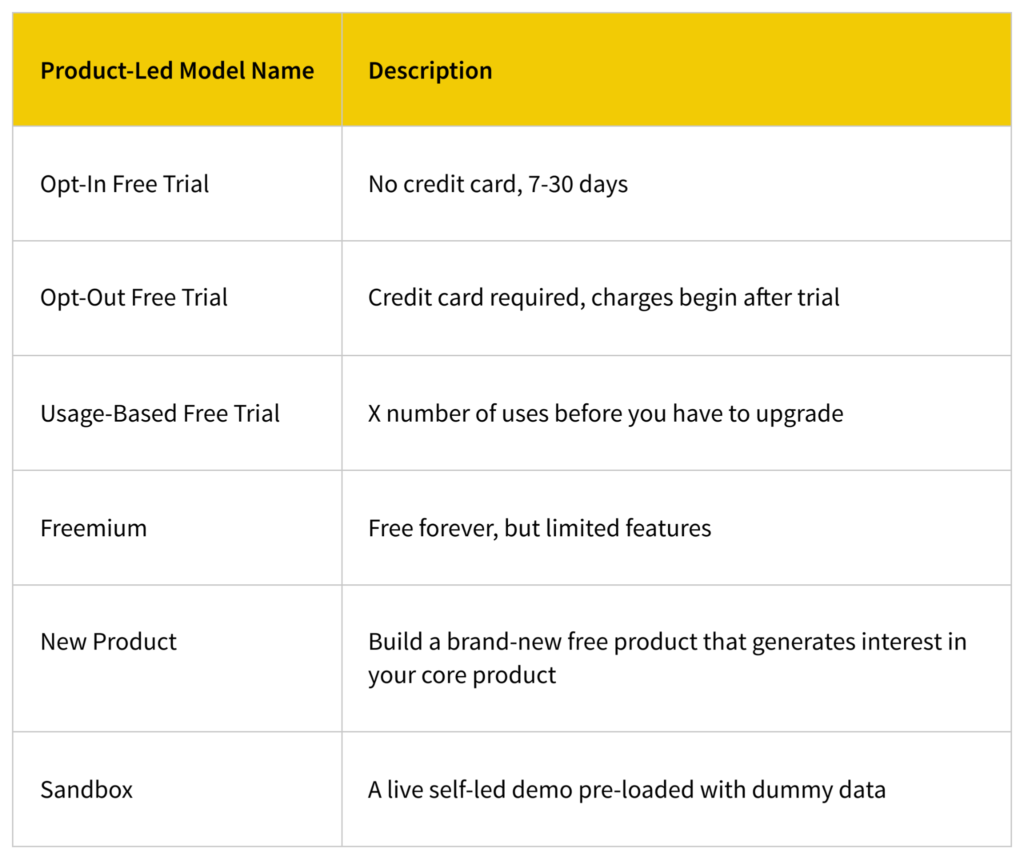
Vidyard’s first free trial was an example of the first model, the opt-in free trial. The freemium product was a combination of the freemium and new product models.
We explore these models in detail during our program (and we also have a more condensed explanation in a blog post about the six models of product-led growth), but what’s essential is that many people never take the time to evaluate which model is best for their business. Many people don’t even realize there’s another option besides the opt-in free trial (the classic 14-day, no credit card required trial).
Mistake 2: Not Measuring What Free Users Are Doing
From what I’ve observed, many companies rely on hunches and assumptions about their users or interviews with a few select customers to make decisions about everything from their onboarding flow to their product roadmap.
And as I saw at Vidyard, if you aren’t measuring what users accomplish during the free trial, then you have no idea which users the Sales team should reach out to. You might not even know what your free-to-paid conversion rate is, much less know where to start to optimize it.
This is why I believe product analytics tools are an absolutely essential part of the product-led growth tech stack. To accurately identify friction points and distractions that are keeping your users from experiencing value in the product, you need to be able to see exactly which features users are interacting with, and which features are associated with more product sign-ups, etc.
Mistake 3: Picking the Wrong Value Metric
For SaaS companies that are transitioning from sales-led growth to product-led growth, another big mistake is to try to keep the same value-based, non-transparent pricing they’ve used before (especially if they’re enterprise-focused). But if you want your product to sell itself with minimal help from your Sales team, you need to provide transparent pricing that makes intuitive sense to the customer. In most cases, that will be some kind of usage-based pricing instead of value-based pricing.
When you switch to usage-based pricing, you have to choose a value metric, meaning you have to decide what “units” of value your pricing will be based on.
For example, think of a product that helps ecommerce brands send email newsletters. Some potential value metrics could be the number of emails sent, the number of recipients on the email list, or the dollar value of the sales generated from those emails.
The ideal value metric aligns your incentives with your customers’ success. But depending on your user base and what your product does for them, it’s not always obvious what that perfect value metric is.
Mistake 4: Failing to Shift the Company Culture to Prioritize End User Success
Finally, you need to acknowledge that switching to product-led growth is a major organizational change. And it’s not without risk. Your free product may cannibalize demo requests like Vidyard’s did, leaving your Sales team fighting over scraps. Or your Support team may be overwhelmed with free users who have no intention of ever buying.
For teams switching from an existing sales-led model, the inertia to stay focused on monetization above all else can be hard to overcome. That’s why so many teams who think they’re going product-led end up adding a free experience onto their sales-led model. It’s always easier for everyone (in the short term) to change as little as possible.
But at the heart of any successful product-led growth story is the belief that end user success will result in the company’s success. This belief must be shared by every team in the business, including Product, Customer Support, Sales, Marketing, and of course, the C-level. If one of those teams is still focused on maximizing sales as a higher priority than maximizing user success, they’ll be pulling in a different direction from the rest of the company, creating conflict and tension that will jeopardize your success.
We Created the ProductLed Accelerator to Help Teams Avoid These Mistakes
Not to sound like a hipster, but I was helping teams “go product-led” before it had a name. After Vidyard, I worked as a demand generation consultant, focusing on optimizing free trials. When OpenView coined the term “product-led growth,” I realized that’s what I’d been doing.
But as product-led growth became a buzzword in the SaaS world, I noticed that the conversation always turned back to the same golden examples.
Everyone was fawning over the success of companies like Slack, Canva, Calendly, and Zoom, but no one was explaining how each of them settled on their particular freemium model and how to figure out if that model would work for you.
No one was teaching the method for becoming product-led. No one was talking about the key mistakes we just discussed or how to avoid them.
I wanted to understand exactly what makes product-led growth so successful, and even more importantly, how to become product-led. I started to research product-led growth and eventually wrote the number one best-selling book about product-led growth. And then, in 2020, I launched the ProductLed Accelerator to give SaaS companies proven frameworks, processes, and systems for launching a free trial or freemium product that actually converts.
4 Steps to Ensure a Smooth Transition to Product-Led Growth
The ProductLed Accelerator is a 4-week live cohort-based program with more than 35 on-demand video lessons and case studies, and each week has a different theme. Not by accident, those themes correspond with the four steps you must work through to ensure a smooth transition from sales-led to product-led.
Step 1: Define End-User Success
The most important aspect of defining your product-led growth strategy is defining what the "Aha!" moment is. Again, this can be hard for companies who serve a variety of target audiences if each audience has a different use case. The first week of our program walks you through figuring out which use case (or job-to-be-done) is the most important for your most valuable customer segment — even if you have a complex product portfolio or a multi-segment audience.
Step 2: Decide Which Product-Led Growth Model Makes Sense for You
Once you know what you’re trying to help users accomplish, you need to figure out how to get your users to experience a quick win with your free product. Again, depending on the complexity of your software and the use case, there are some product-led models that will make it hard or almost impossible for users to experience the "Aha!" moment that represents this quick win.
In the second week of our program, you work through a 7-step process (the Bedrock Method) to figure out which product-led model will get the best results for your business.
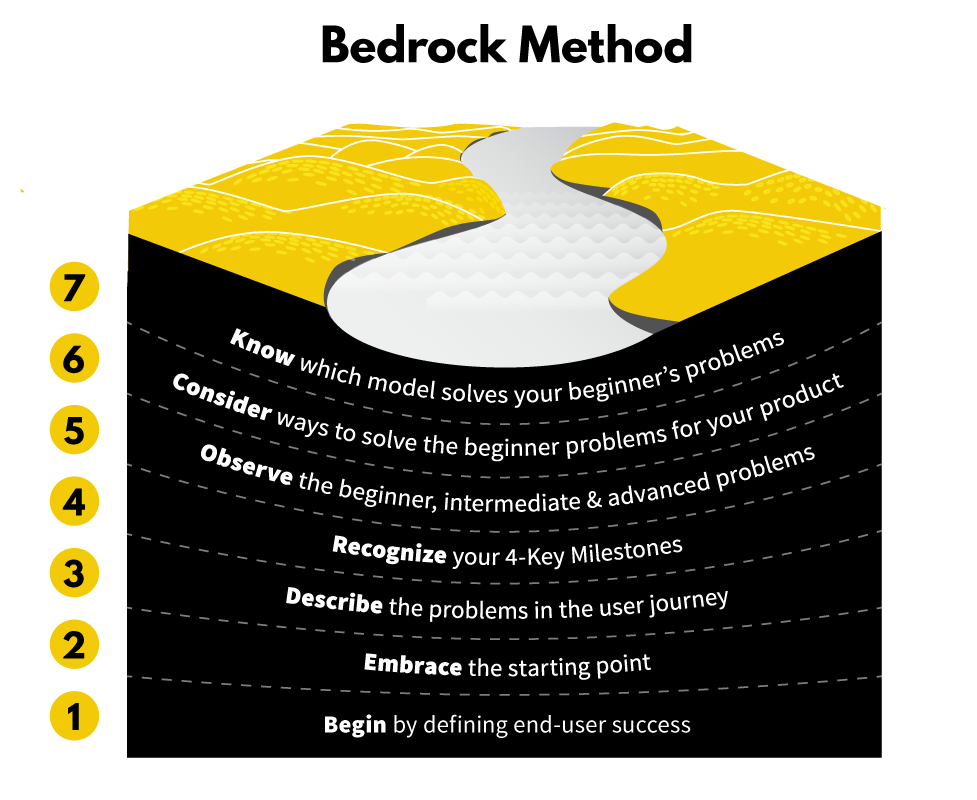
We also teach you how to spot the symptoms that show you’ve chosen the wrong product-led model. You’ll know how to tell if your model is wrong or if you just need to put more effort into your onboarding journey.
Step 3: Define Your Ideal Onboarding Journey
Your ideal onboarding journey is the simplest path from creating an account to experiencing the "Aha!" moment that you defined in Step 1. I like to think of it as the “straight-line path” from Point A (logging in for the first time) to Point B (the "Aha!" moment).
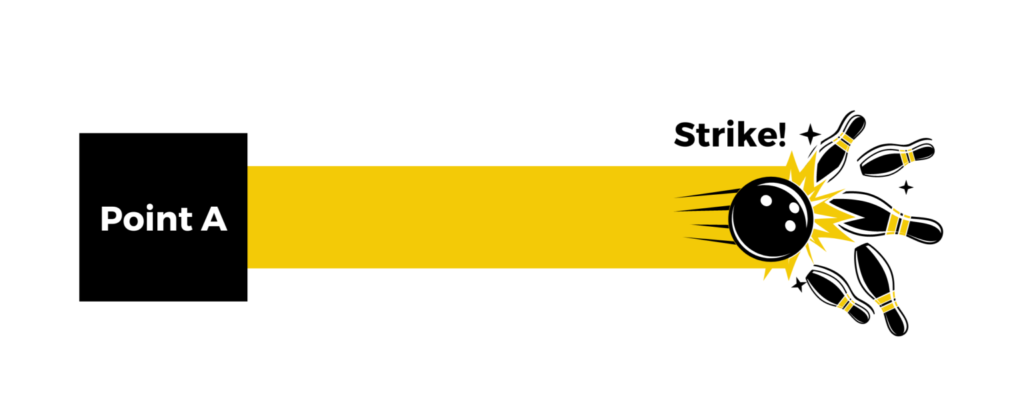
The third week of our program walks you through a four-step framework to reverse engineer what it takes for your users to be successful in record time. And you also learn how to get alignment from other team members to eliminate even more friction in your onboarding process.
Step 4: Design Your Pricing Around the Value Metric That’s Best Aligned with User Success
Your pricing strategy needs to be well matched with your acquisition model and take into account the size of your potential audience for your company to be profitable. And as we mentioned before, the ideal pricing strategy creates a perfect alignment of incentives between you and the customer — where their success naturally leads them to upgrade.
In the final week of the Accelerator, we share the most common pricing mistakes, introduce the two main types of value metrics, and lead you through our Pricing Metrics Decision Framework to help you identify the best metrics for your specific revenue model.
Join Our Next Cohort
The ProductLed Accelerator helps businesses build a strategy for switching to product-led from the ground up — and avoid the huge mistakes that cause many PLG initiatives to fail.
In addition to the decision frameworks, the on-demand video lessons, and weekly assignments, participants also get 12 months of access to expert workshops and coaching, along with lifetime access to a community of high-caliber peers for networking and support.
More than 590 students have taken the program since it launched in 2020, ranging from CEOs to VPs of Product to Customer Success directors. Representatives from Adobe, HubSpot, Mixpanel, and Microsoft have used the Accelerator to hone their strategy for a new product launch or transition existing products from sales-led to product-led.
We’ve helped companies at every stage of the PLG transition, from startups like Enzuzo to $4B behemoths like Boomi (part of Dell).
After taking our training, participants have seen their free product signups double and their free-to-paid upgrades triple (Tettra). Some participants have seen almost overnight growth in MRR by implementing just a couple of recommended changes in their onboarding process. Others say the program helped their team get aligned around all the changes required in each business unit when moving from a sales-led to a product-led approach.
Enroll today to join our next live program or take our free PLG certification course now. You can also join the world's largest product-led growth community on Slack for free to learn and share industry best practices and get questions answered by peers and experts.

